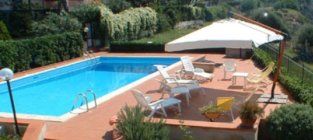| |
Patti
Patti is connected to the rest of Sicily by train, via the Patti-San Piero Patti train station, located on the railway line Messina-Palermo, and the A20 Palermo-Messina highway. It is still known for the ruins of Tindari, famous for its ancient Greece theatre, and the Villa Romana.
It stands near the site of the ancient Tyndaris, a Lacedćmonian colony that had a very flourishing commerce; the magnificent temple of Mercury in the latter city was despoiled by Verres. By the time of Pliny the Elder, the sea had encroached greatly upon the shore, and after the foundation of Patti, Tyndaris was almost entirely abandoned; there remains only the church of Santa Maria del Tindaro, with a Franciscan monastery.
The current town name derives from the name given by its inhabitants after they moved there, following an earthquake that destroyedTindari, forcing them to find another place to settle. The new site was named Epě Akten (Greek for 'on the shore'), from which the contracted name "Patti" derives.
The city was rebuilt by Count Roger, after the Saracens had been driven from Messina (1058). The town was founded by the Norman king Roger II of Sicily in 1094. Patti is also famous for its large sandy beaches.
Patti was destroyed by Frederick of Aragon about 1300, on account of its attachment to the House of Anjou; rebuilt in the sixteenth century, it was sacked by the Ottoman Turks.
|





